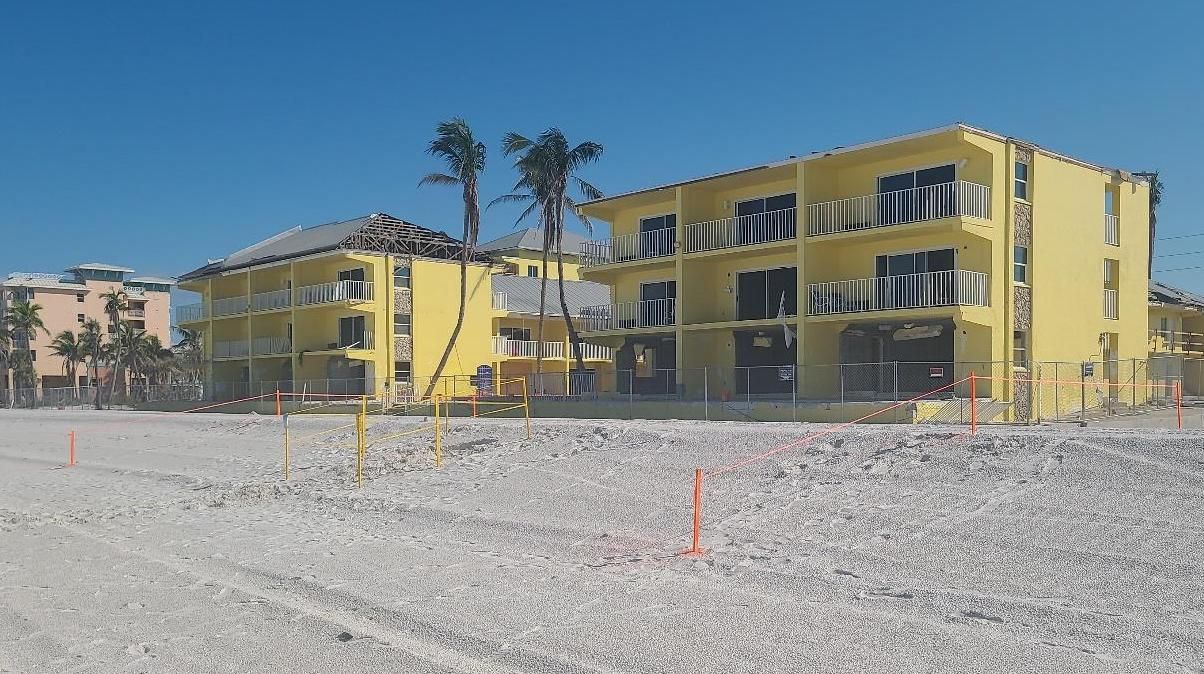Local officials lead Florida seacoast recovery conference

Local experts on seacoast ecology are leading state efforts to reconcile scheduled beach replenishment and the environment at the second Florida Resilience Conference, set for Sept. 27-29 in Fort Lauderdale. The conference brings together local, national and international experts to address issues with Florida’s beaches and waterways.
One of the lead speakers is Michael Poff, a Lee County professional engineer. His work includes getting the Federal Emergency Management Association, the U.S. Fish and Wildlife Service, the Bureau of Ocean Energy Management and dozens of other parties to sign off on regularly scheduled Lee County beach rebuilding efforts and at the same time, repair the damage from Hurricane Ian.
“They all have to agree on everything,” said Poff, who is who is president of Coastal Engineering Consultants. “It’s one less disturbance to the environment.”
In previous work, these had been considered separate projects, which meant that the beaches would be renourished by dredge and pipe, but that hurricane damage was repaired with trucked-in sand.
The current work is at Fort Myers Beach, Lovers Key and Bonita Beach. Poff will present the case study along with Chadd Chustze, environmental project manager for the town of Fort Myers Beach. This year, the town began an emergency berm project that has already had turtle nests. One of the key items in the project is getting the proper biological opinions and signoffs from necessary agencies. And the issues are not just biology. Sand, for instance, is a mineral resource and is of federal concern.
Poff’s firm has worked with Charlotte County on renourishment at Englewood Beach, pulling from Stump Pass. He said that because of the historic phosphate operation at Port Boca Grande, beach renourishment on Gasparilla Island is led by the Army Corps of Engineers, which also supervises the Gulf Intracoastal Waterway.
While the conference is only the second dedicated to the specific topic of resilience, it is actually held concurrently with the Florida Shore and Beach Preservation Association, which was founded in 1957. At the organization’s founding, 37 Florida civic leaders concerned about erosion at resort beaches came together to share ideas. That gathering spurred the creation of what was the State Department of Beaches and Shores and led to the building of the state’s first wave tank at the University of Florida.
The current president of the board is Emily Lewis, Charlotte County’s deputy county administrator, who hopes to bring the conference to Charlotte County next year.
Also representing our area at the conference is the Port Charlotte-based Coastal Heartland National Estuary Partnership, which works to help restore Charlotte Harbor. Executive Director Jennifer Hecker and Nicole Iadevaia, the group’s director of research and restoration, will present on habitats and climate change. Iadevaia, an expert in Charlotte Harbor’s waterways, will also present a second time on building resiliency through hydrological restoration in Charlotte Harbor.
Steve Boutelle, the marine operations manager for the Lee County National Resources Department, will serve on a panel entitled “How to get your sand and what to do with it.” He will describe how Lee County recovered nearly 130,000 cubic yards (8,800 dump truck loads) of beach sand from public roads after Hurricane Ian and returned it to the beach to help repair erosion caused by the storm.
Also speaking will be Jennifer Languell, founder and president of Trifecta Construction and Solutions of Fort Myers. She is the green building and sustainable development advisor for Babcock Ranch.









